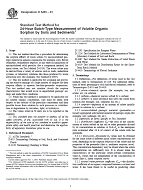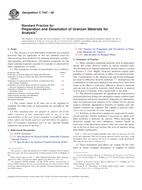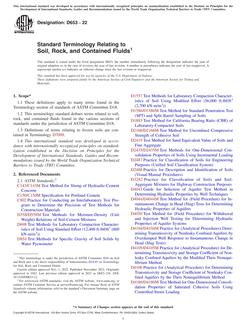1.1 This practice describes several laboratory test procedures for evaluating corrosion performance of metallic containment materials under conditions similar to those that may occur in solar heating and cooling systems. All test results relate to the performance of the metallic containment material only as a part of a metal/fluid pair. Performance in these laboratory test procedures, taken by itself, does not necessarily constitute an adequate basis for acceptance or rejection of a particular metal/fluid pair in solar heating and cooling systems, either in general or in a particular design. This practice is not intended to preclude the use of other screening tests, particularly when those tests are designed to more closely simulate field service conditions.
1.2 This practice describes apparatus and procedures for several tests, any one or more of which may be used to evaluate the deterioration of the metallic containment material in a metal/fluid pair. The procedures are designed to permit simulation, heating, and cooling systems including ( ) operating full flow, ( ) stagnant full, ( ) stagnant partial fill, and ( ) stagnant empty. Particular attention should be directed to properly reflecting whether the system is open or closed to atmosphere.
1.3 This practice covers the following six tests:
Practice A Basic Immersion Test at Atmospheric Pressure Practice B Heat-Rejecting Surface Test at Atmospheric Pressure Practice C High-Pressure Test Practice D Repeated Dip Dry Test at Atmospheric Pressure Practice E Crevice Test at Atmospheric Pressure Practice F Tube Loop Test at Atmospheric Pressure
1.4 Practice A is concerned with the interaction of metal and fluid when both are at the same temperature with no heat transfer from one to the other. It is regarded as useful for plumbing, pumps, tanking, etc., but of less significance, taken by itself, for collector panels. Practices B and F are concerned with the deterioration of the metal when there is transfer of heat from the metal into the heat transfer fluid. These practices are especially applicable to the collector panel. Practice C permits a variety of tests but is especially useful in relation to systems that experience high temperatures, or are closed to the atmosphere. Practices D and E evaluate specific corrosion problems that may be associated with particular metal/fluid pairs and particular designs of systems and components.
1.5 This standard does not purport to address all of the safety problems, if any, associated with its use. It is the responsibility of the user of this standard to establish appropriate safety and health practices and determine the applicability of regulatory limitations prior to use.
Product Details
- Published:
- 01/01/1996
- Number of Pages:
- 7
- File Size:
- 1 file , 79 KB


